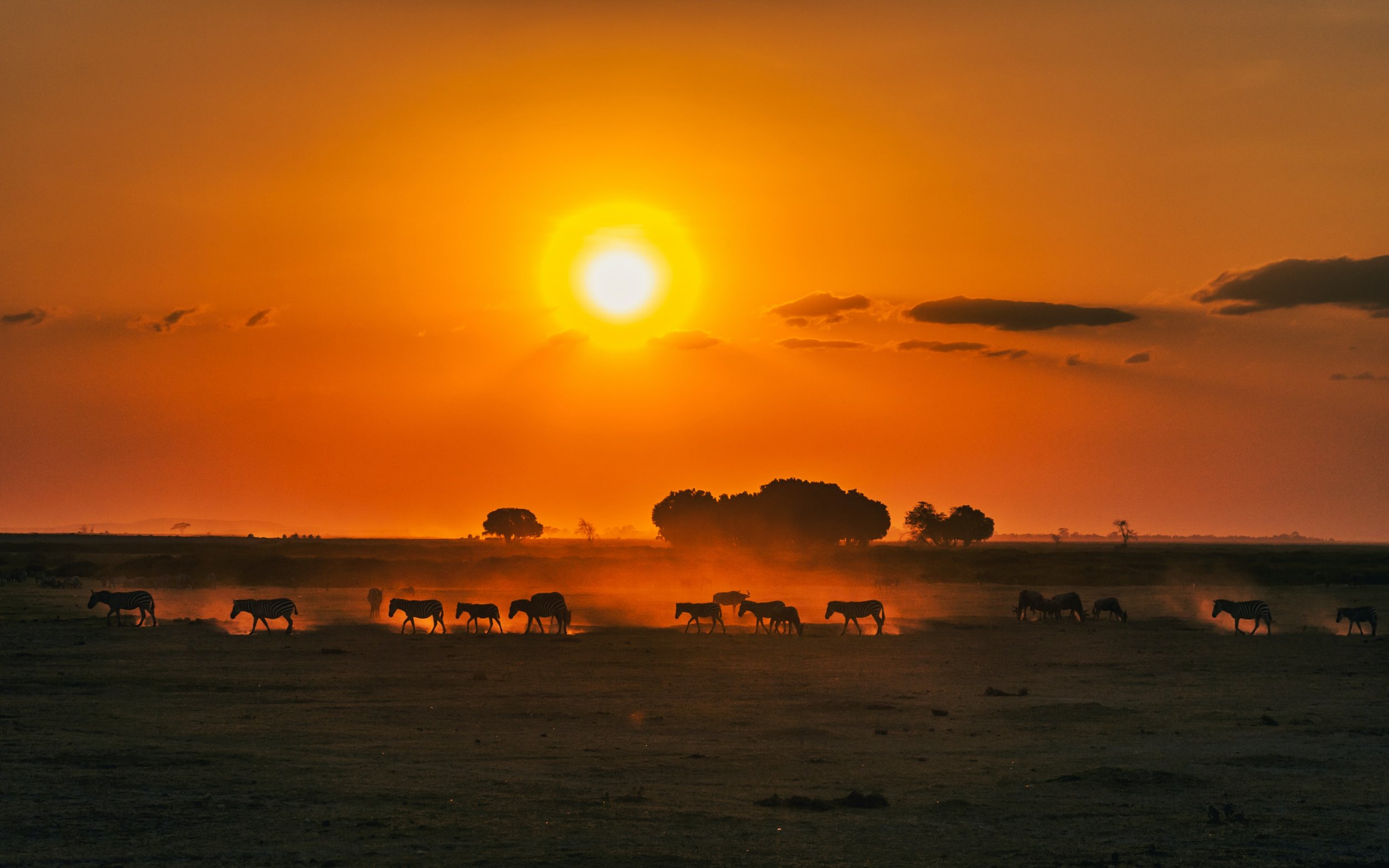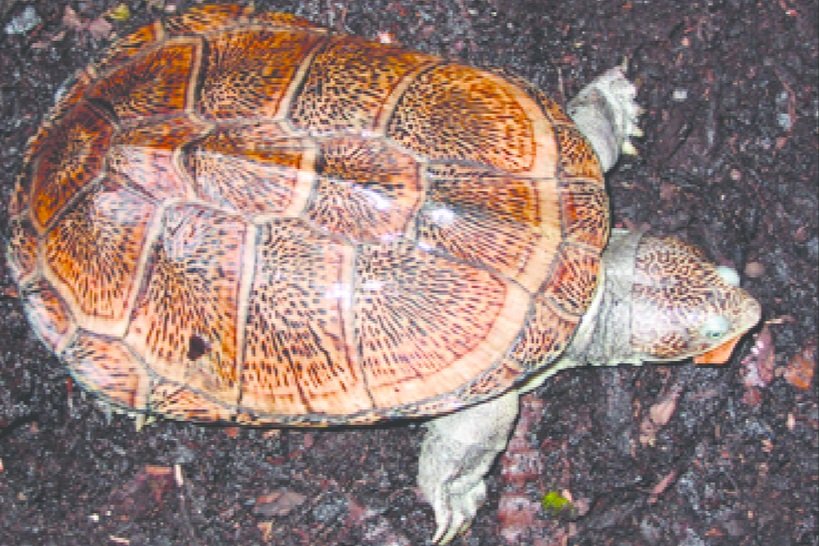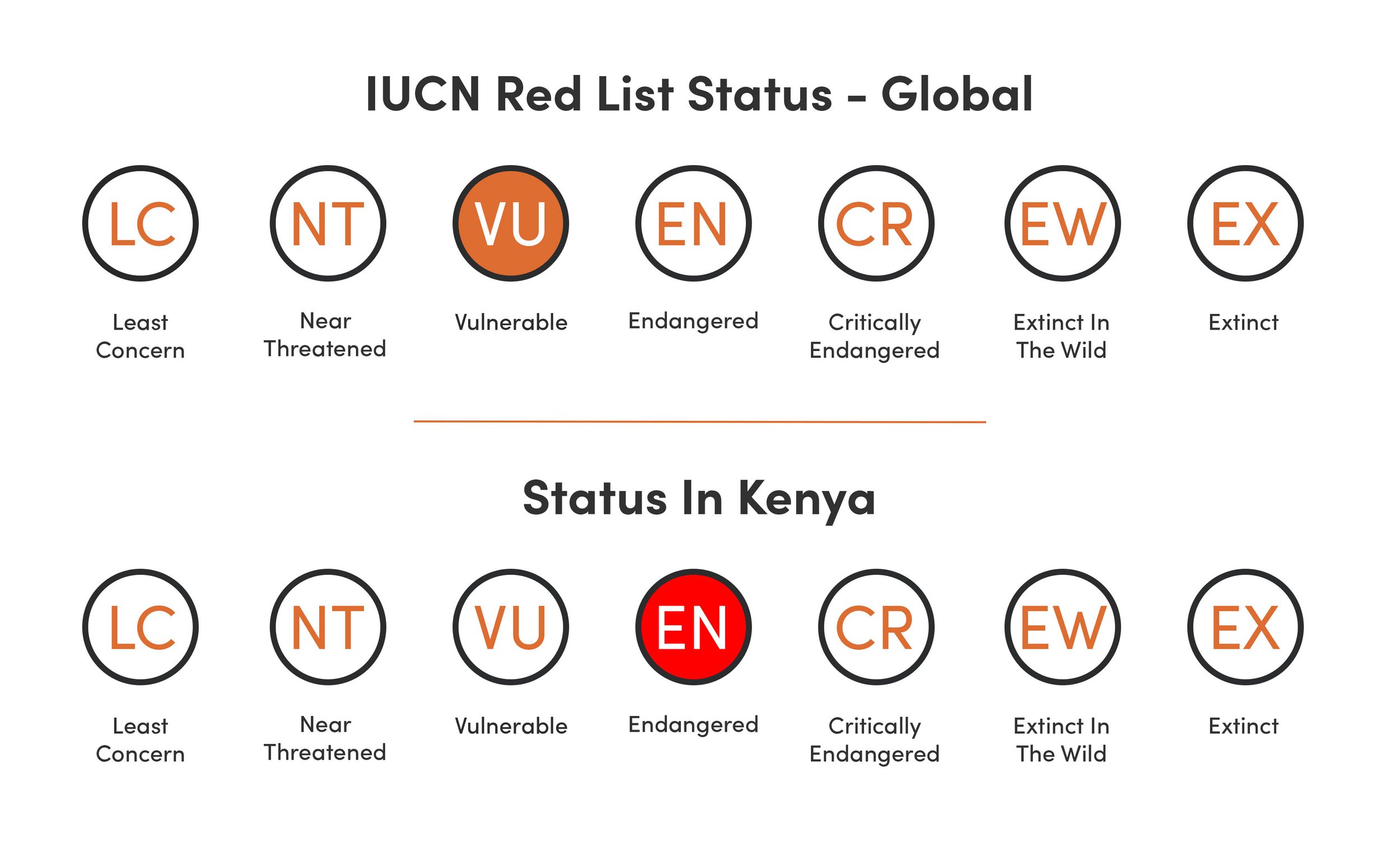
Kenya
Common Name: Clarke's weaver
Scientific Name: Ploceus golandi
Image: © Raphaël Nussbaumer

Fact
Nothing was known about the clarke’s weaver breeding habits until an active colony was discovered in March 2013.
About
Overview:
The Clarke's weaver is a species of bird in the Ploceidae family. Strikingly coloured, Clarke’s weaver is endemic to Kenya and its distribution is tiny, with only two known habitats.
Lifespan:
The exact lifespan of the Clarke's weaver is not known. However, based on the lifespan of other weaver birds, it can be speculated that the Clarke's weaver can live between a range of 10-15 years.
Habitat:
Image: © Raphaël Nussbaumer
Dense thickets and open woodland of two Kenyan coastal forests. Tropical moist lowland forests and wetlands are required for successful breeding. They nest in colonies of 5-30 birds, feeding high in the canopy as well as foraging at the forest edge.
When to spot:
Clarke’s weaver can be seen in Kenya all year round, but it is largely absent in the Arabuko-Sokoke Forest in the months of April-July. It is believed that they move to breeding grounds near the Dakatcha Forest during this time.
Diet:
Information on the Clarke’s weaver is very limited, but it is said to feed high up in the canopy on caterpillars, worms, beetles and other small insects; but it also feeds on fruits of Loranthus and Brachystegia spicifomis.
Clarke's weaver forages in feeding flocks of up to 30, occasionally more than 100 individuals. It sometimes joins mixed-species flocks, especially helmet-shrikes (Prionops species).

Fact
Vocalisations are typical of weavers: “chek” notes and a squealing, sizzling “radio static” song, often given by a whole group in concert.
How To Identify
Males and females have dark eyes, a slender bill and yellow edges to the wing feathers. There are also variations in markings between sexes:
Males:
Yellow underparts and black head, breast and tail with some yellow and olive green edging.
Females:
Much duller with a yellow-olive head.
Image: © World Land Trust
Vulnerability Status
IUCN Red List status: Endangered
Country status: Endangered
Population size: Around 2,000 - 4,000 individuals with a decreasing population.
Approx. Clarke’s weaver distribution in Kenya
Threats
This species has a small and fragmented range, within which its woodland habitat is being cleared for cultivation and being altered by selective tree-cutting, such that its very small population is presumed to be declining.
Key threats to species:
Rapid deforestation due to increased selective tree cutting, coupled with the clearance of land for cultivation. An example of this is in Dakatcha hilltop where land is being cleared for pineapple planting.

Fact
During the months of April to July, the Clarke’s weaver migrates from the Sokoke-Arabuko to the open Dakatcha woodland to nest.
Conservation Actions
There are some long-term conservation efforts underway to help protect the Clarke’s weaver. Sustainable management projects and community forest initiatives, such as the Dakatcha woodland conservation group and Nature Kenya’s educational campaigns for awareness, are all contributing to the survival of this endangered bird.
What You Can Do To Help
World Land Trust has been working with Nature Kenya to save and protect its breeding grounds in Dakatcha Woodland. So far, 810 acres of the woodland have been protected for the wildlife that lives there. They are raising funds to purchase more land and protect a larger area. If you would like to find out more, please CLICK HERE.
Further Information
Click the title below for further information.
-
World Land Trust has been working with Nature Kenya to save and protect its breeding grounds in Dakatcha Woodland. Find out more on their website:
Common Name: Turkana mud turtle
(otherwise known as Broadley's mud turtle, or the Lake Turkana hinged terrapin)
Scientific Name: Pelusios broadleyi
Image: © Roberto Sindaco

Fact
The Turkana mud turtle can only spend 8 hours out of wet environments.
About
Overview:
The Turkana mud turtle was only discovered in 1986 and is only known to be found on the South Eastern shores of Lake Turkana in Kenya.
Lifespan:
Up to 40 years.
Habitat:
They are a semi-aquatic, freshwater turtle that can be seen both in water and on the lake shores.
When to spot:
Mud turtles will hibernate in the winter, burrowing themselves into the mud to stay warm so the best time to see them is during the summer months, December through March.
Diet:
They are omnivorous and will eat a variety of small fish, worms and plant life.
Predators:
Weasels, foxes, snakes, shrews and a variety of birds.

Fact
Lake Turkana, where the Turkana mud turtle lives, is the largest permanent desert lake globally, stretching almost 250km from north to south.
How To Identify
Mud turtles are small and nondescript. The upper shell (carapace) is olive to dark brown and can even look black. The carapace is patternless, smooth, keelless and is between 15-20cm in size. It only has 11 marginal scutes (plates) rather than the 12 scutes found on most other turtle species.
Image: © H. PRokoP
Vulnerability Status
IUCN Red List status: Vulnerable
Country status: Endangered - boarding critically endangered according to the Tortoise and Freshwater Turtle Specialist Group (TFTSG)
Population size: Unknown
Threats
Approx. distribution area for the Turkana mud turtle
Key threats to species:
The Turkana mud turtle is vulnerable due to its limited habitat range. Lake Turkana is only 44km wide from east to west and the Turkana mud turtle only lives on the southern shore.
It is threatened by predation by weasels, foxes, snakes, shrews and a variety of birds.
Mud turtles are popular pets and so wild species are also in danger of illegal poaching to sell into the pet trade.
The Turkana mud turtle is particularly threatened by climate change as they are very specialised and only live in one area.
Draining of wetlands for urban and industrial development has also significantly impacted mud turtle populations, reducing the amount of suitable habitats.
Mud turtles are often seen crossing roads in search of nest sites or water. These turtles are injured or killed by passing cars.
Importance of the species:
The Turkana mud turtle is unique to the Southern shores of Lake Turkana.
They play an important role in maintaining a balanced ecosystem.
They also help to consume carrion in ponds and lakes.

Fact
The Turkana mud turtle is the second smallest of its genus.
Conservation Actions
Image: © H. PRokoP
The Turtle Conservation Fund (TCF) is a partnership coalition of leading turtle conservationists focused on ensuring the long-term survival of tortoises and freshwater turtles, including the Turkana mud turtle. TCF has a grant program for organisations or individuals for specific conservation or research projects dealing with endangered tortoises and freshwater turtles (but no marine turtles). Although the Turkana mud turtle is not on the list of TCF supported projects there are many other mud turtle species and so the Turkana mud turtle could be added in the future.
What You Can Do To Help
There is little information regarding the Turkana mud turtle and so there is scope to create projects to conserve them. As they are only found in a small area they are an example of a species that is severely threatened by climate change.
There are many ways we can help the Turkana mud turtle and the fight against climate change. Check out our Environmental Calendar to find some inspiration to start your journey.
Further Information
Click the title below for further information.
-
The Turtle Conservation Fund (TCF) is a strategizing and funding partnership coalition of leading turtle conservation organisations and individuals focused on ensuring the long-term survival of tortoises and freshwater turtles.
-
The Turtle Conservancy is dedicated to protecting threatened turtles and tortoises and their habitats worldwide, and to promoting their appreciation by people everywhere.










